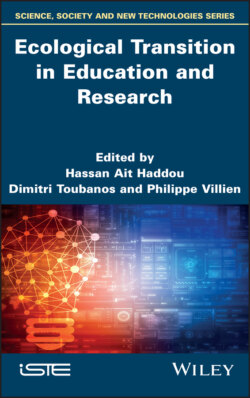Читать книгу Ecological Transition in Education and Research - Группа авторов - Страница 18
1.6. Teaching
ОглавлениеIn 1995, the European community was looking for a way to get the bioclimatic message across in architecture schools without having to rewrite an umpteenth book on the subject. Teachers had to be given material, and what is better than existing exemplary buildings? We presented the educational portfolio. It was a portfolio containing educational material by means of examples drawn from bioclimatic buildings in Europe. There was a portfolio on housing, on the tertiary sector, on schools. We found all the materials that could spark the interest of any architecture teacher, whether at the workshop, for theory courses, in terms of structure or the physics of building. There was even a floppy disk with Autocad with a building model for the computer teacher. For the structure teacher there were the plans with the details in 1:10 and 1:20 scales. The portfolio also included overlays, slides, the architect’s resume, sometimes an architect’s text, climate and energy analysis. All the schools got one of the three portfolios, so there must be one at the school here.
Various volumes of the “Guide to bioclimatic architecture” have been published.
In 1996, the European Master in Architecture and Sustainable Development was created together with the Toulouse School of Architecture and the EPFL in Lausanne.
In 2003, we won the Roberval Prize for Higher Education with the book Natural Lighting in Buildings.
The educational approach to teaching in Louvain-La-Neuve is made up of three blocks:
1 1) three-year Baccalaureate (“License” in France, equivalent of a Bachelor’s degree): raising students’ awareness about the issues we are interested in;
2 2) two-year Master’s degree: validation of awareness;
3 3) doctoral studies: reflection on this subject.
There are theory classes, project workshops and optional courses. The theory and the projects fully interact with one another. The specificity of our school was that the same teachers who taught theory lessons also conducted the workshops, which I think was specific to our school. For example, a first course on materials or climatic architecture is directly related to the first “habitat” project. The course on the physics of building (a theory course) then had an impact on the second project: natural light, with a model work in relation to the sky and the artificial sun.
These are still buildings in the city, and not in a potato field: for us, the problem of tomorrow is the city or a village (an urbanized area). We would never commission a project for a house with four exterior walls.
At the beginning, it was the results of the “Architecture and Climate” course that had an impact on the other courses. Afterwards, in the field of research, it was the researchers of “Architecture and Climate” team who became involved.
Optional courses are those which can be found at other faculties, such as for example, on environmental pollution, environmental law or ecology. During the last year, there is the graduation or final thesis (the “dissertation” in France), which is usually an architectural project.
